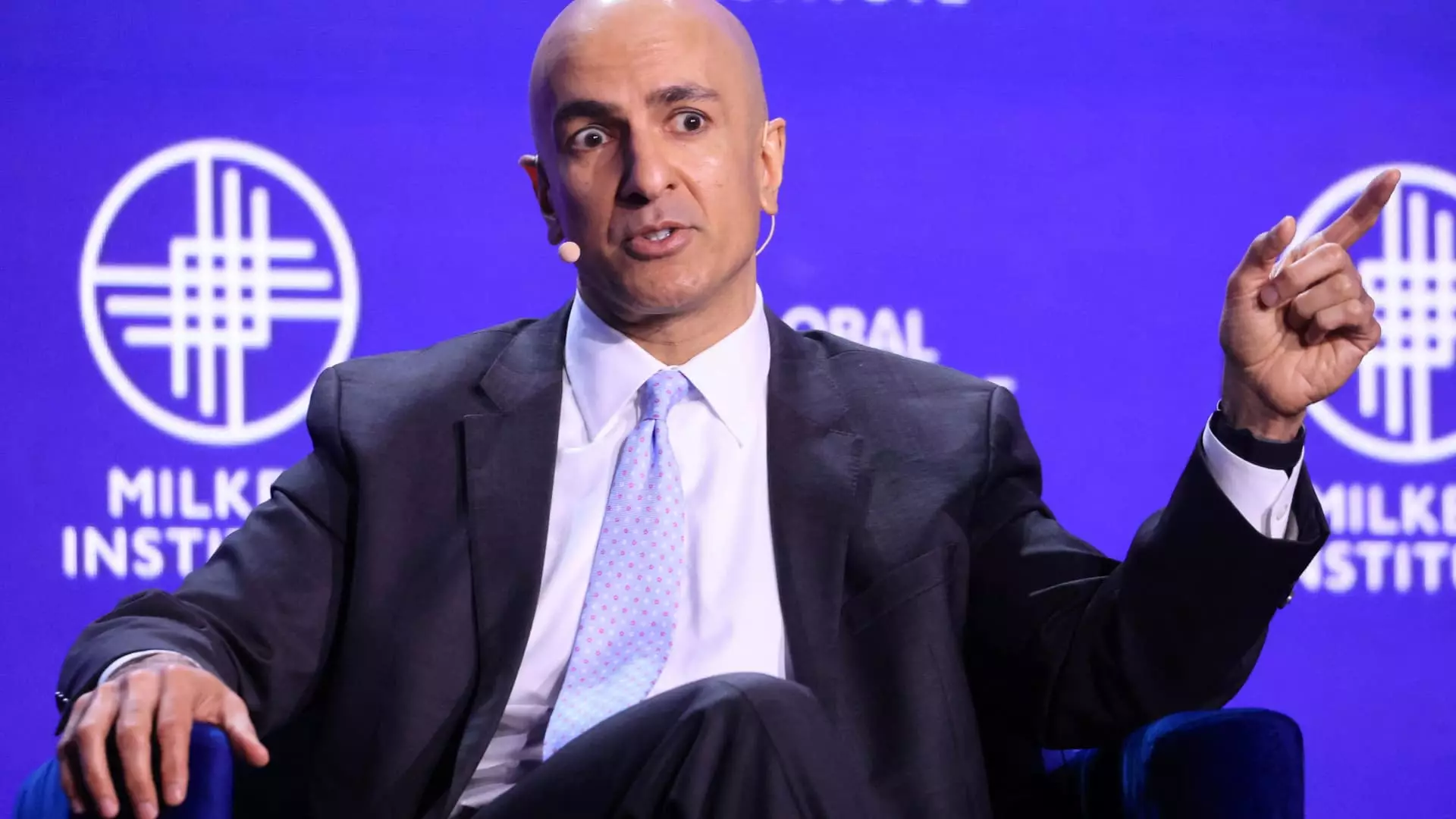In the wake of rapid economic fluctuations, the U.S. Federal Reserve’s recent decisions concerning interest rates have emerged as focal points for discussions among economic analysts and policymakers. Minneapolis Federal Reserve President Neel Kashkari’s remarks regarding interest rate cuts have sparked considerable interest, particularly following the recent unexpected half-percentage-point reduction. This step marks a significant moment, given that it is the first substantial cut since the onset of the COVID-19 pandemic and echoes similar extensive measures taken during the financial crisis of 2008. The juxtaposition of Kashkari’s expectations against historical precedents illuminates the complexities at play in current monetary policy.
Kashkari’s rationale for the recent rate cut suggests a recalibration of priorities within the Federal Open Market Committee (FOMC). He emphasized that the reduction was essential, not merely for immediate economic stimulation but as a response to evolving circumstances impacting the labor market. The central bank appears to be transitioning from a primary focus on controlling inflation—characterized by rising prices—to addressing concerns around the softening labor market. This indicates a broader strategy to balance dual mandates: ensuring stable prices while maximizing employment.
His assertion that we currently maintain a “net tight position” underlines the cautious optimism surrounding an otherwise vibrant labor market. However, Kashkari also acknowledged that allowing such dynamics to stabilize while concurrently managing inflation expectations remains paramount. He articulated a vision where smaller incremental rate cuts could follow the substantial initial reduction unless there are significant shifts in economic data.
Kashkari’s perspective reveals an intention to guide monetary policy towards a “neutral” stance—neither restrictive nor overly accommodative. Herein lies the challenge: determining what that neutral rate is, currently projected at around 2.9%, versus the existing targeted federal funds rate range of 4.75% to 5%. The dialogue surrounding these numbers illustrates an ongoing debate about how aggressively the Fed should act to mitigate potential economic risks while fostering growth.
This sentiment is further echoed by Atlanta Fed President Raphael Bostic, who has publicly recognized the emergence of a faster-than-expected progression on inflation and labor market adjustments. His comments suggest a readiness within the Fed to pivot rapidly based on emerging data. In this evolving landscape, the commitment to normalizing monetary policy becomes even more crucial, enabling the central bank to respond adeptly to economic developments—whether that be a resurgence in inflation or further slowing in employment.
Market analysis points to an intriguing interplay of expectations surrounding future rate decisions. Current pricing in the futures market indicates a split probability regarding whether the FOMC might implement a quarter-point or half-point cut at the November meeting, with heightened anticipation for a more significant reduction come December. This forecasting reflects not just speculative interest but a broader confidence in the Fed’s capability to address the complex dynamics shaping the economy.
However, there’s an underlying tension in these forecasts; should inflation unexpectedly spike or should the labor market exhibit further vulnerabilities, the Fed might find itself reassessing these expectations and adjusting its approach accordingly. Hence, a reactive posture may become necessary, illustrating the fluid nature of current economic conditions.
The remarks of Neel Kashkari and other Fed officials reflect a nuanced understanding of the current economic climate, one that balances optimism against the reality of potential volatility. As the Fed navigates these complexities, stakeholders—ranging from business leaders to everyday consumers—will closely watch for signals of future monetary policy adjustments. Understanding the delicate interplay between interest rates, inflation, and labor market stability will be essential as we steer toward what could be a pivotal phase in economic recovery and growth strategies. The road ahead remains intricate and uncertain, yet the Fed’s strategic maneuvers will significantly shape the nation’s economic future.

